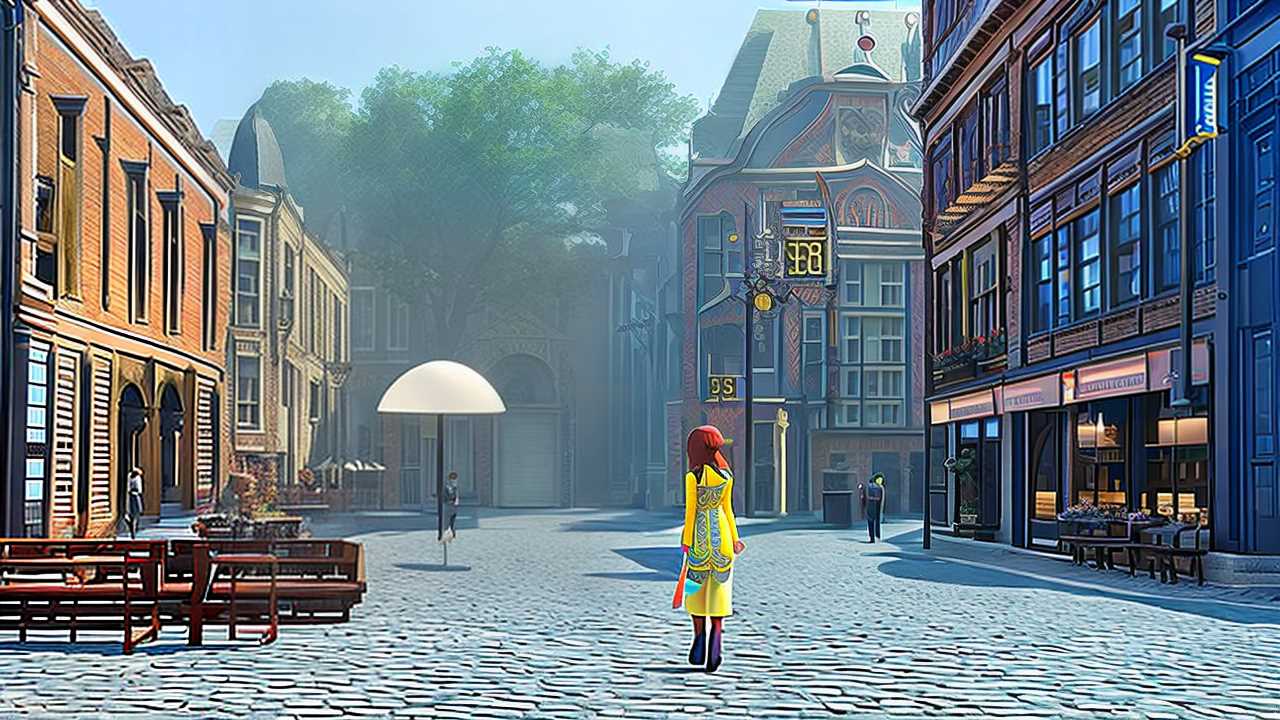You're tasked with selecting a design aesthetic that resonates with your brand's message and audience. Skeuomorphism and flat design are two popular options, each with its pros and cons. Skeuomorphism mimics real-life objects, making digital products feel more relatable, while flat design strips things down to essentials, focusing on content. When choosing, consider your brand's personality, target audience, and message. Will you opt for a playful, youthful vibe with skeuomorphism or a modern, minimalist look with flat design? As you weigh the options, you'll uncover the nuances that'll guide your decision and craft an aesthetic that truly resonates.
 Explore the world of skeuomorphism, a design approach that mimics real-life objects and textures to create a sense of familiarity and comfort in digital products. You've probably encountered skeuomorphic design in your daily life, whether it's the trash can icon on your computer or the leather-bound look of your digital calendar. This design approach aims to make digital products feel more relatable and intuitive by using visual cues from the physical world.
As you navigate digital products, you'll notice skeuomorphic elements like buttons that resemble real buttons, or interfaces that mimic the look and feel of real-world objects. These design elements are carefully crafted to evoke a sense of nostalgia and comfort, making it easier for you to interact with digital products. By incorporating familiar textures, colors, and shapes, skeuomorphic design helps bridge the gap between the physical and digital worlds.
Explore the world of skeuomorphism, a design approach that mimics real-life objects and textures to create a sense of familiarity and comfort in digital products. You've probably encountered skeuomorphic design in your daily life, whether it's the trash can icon on your computer or the leather-bound look of your digital calendar. This design approach aims to make digital products feel more relatable and intuitive by using visual cues from the physical world.
As you navigate digital products, you'll notice skeuomorphic elements like buttons that resemble real buttons, or interfaces that mimic the look and feel of real-world objects. These design elements are carefully crafted to evoke a sense of nostalgia and comfort, making it easier for you to interact with digital products. By incorporating familiar textures, colors, and shapes, skeuomorphic design helps bridge the gap between the physical and digital worlds.
 Ditching the ornate details, flat design strips digital products down to their essentials, letting you focus on the content rather than the container. This minimalist approach eliminates clutter, making it easier for users to navigate and interact with your digital product. You'll notice that flat design often features simple shapes, solid colors, and clean typography.
This simplicity creates a sense of calmness and serenity, allowing users to focus on the task at hand. When designing with a flat aesthetic, you'll want to keep typography simple and easy to read. Sans-serif fonts are often preferred, as they provide a clean and modern look. Color schemes are also simplified, with a focus on bold, bright colors that help guide the user's attention. Additionally, you'll notice that flat design often uses subtle animations and transitions to enhance the user experience.
Ditching the ornate details, flat design strips digital products down to their essentials, letting you focus on the content rather than the container. This minimalist approach eliminates clutter, making it easier for users to navigate and interact with your digital product. You'll notice that flat design often features simple shapes, solid colors, and clean typography.
This simplicity creates a sense of calmness and serenity, allowing users to focus on the task at hand. When designing with a flat aesthetic, you'll want to keep typography simple and easy to read. Sans-serif fonts are often preferred, as they provide a clean and modern look. Color schemes are also simplified, with a focus on bold, bright colors that help guide the user's attention. Additionally, you'll notice that flat design often uses subtle animations and transitions to enhance the user experience.
 As you weigh the benefits of skeuomorphism and flat design, you'll find that each style has its strengths and weaknesses that can make or break the user experience. Skeuomorphism's real-world metaphors can create a sense of familiarity, making it easier for users to understand complex digital concepts. However, this approach can lead to cluttered and outdated designs.
On the other hand, flat design's minimalism can result in a clean and modern aesthetic, but it can also make it difficult for users to understand the functionality of certain elements. When it comes to user engagement, skeuomorphism can evoke a sense of nostalgia and tactility, making interactions feel more tangible. However, this style can also be overly reliant on visual cues, which can be distracting.
Flat design, by contrast, prioritizes simplicity and clarity, making it easier to focus on the content. However, it can also lead to a lack of visual hierarchy and depth. Ultimately, understanding the pros and cons of each style is crucial in making an informed design decision.
As you weigh the benefits of skeuomorphism and flat design, you'll find that each style has its strengths and weaknesses that can make or break the user experience. Skeuomorphism's real-world metaphors can create a sense of familiarity, making it easier for users to understand complex digital concepts. However, this approach can lead to cluttered and outdated designs.
On the other hand, flat design's minimalism can result in a clean and modern aesthetic, but it can also make it difficult for users to understand the functionality of certain elements. When it comes to user engagement, skeuomorphism can evoke a sense of nostalgia and tactility, making interactions feel more tangible. However, this style can also be overly reliant on visual cues, which can be distracting.
Flat design, by contrast, prioritizes simplicity and clarity, making it easier to focus on the content. However, it can also lead to a lack of visual hierarchy and depth. Ultimately, understanding the pros and cons of each style is crucial in making an informed design decision.
 When selecting a design style, you'll need to consider your brand's personality, target audience, and the message you want to convey. This will help you choose an aesthetic that effectively communicates your brand's values and resonates with your audience. For instance, if your brand is playful and youthful, a skeuomorphic design might be a good fit.
On the other hand, if your brand is modern and minimalist, a flat design could be the way to go. You should also think about the emotional response you want to evoke in your audience. Do you want to create a sense of nostalgia or familiarity? Skeuomorphism might be the better choice. Or do you want to appear sleek and cutting-edge? Flat design could be the way to go. Ultimately, the key is to choose a design style that aligns with your brand's unique identity and resonates with your target audience.
When selecting a design style, you'll need to consider your brand's personality, target audience, and the message you want to convey. This will help you choose an aesthetic that effectively communicates your brand's values and resonates with your audience. For instance, if your brand is playful and youthful, a skeuomorphic design might be a good fit.
On the other hand, if your brand is modern and minimalist, a flat design could be the way to go. You should also think about the emotional response you want to evoke in your audience. Do you want to create a sense of nostalgia or familiarity? Skeuomorphism might be the better choice. Or do you want to appear sleek and cutting-edge? Flat design could be the way to go. Ultimately, the key is to choose a design style that aligns with your brand's unique identity and resonates with your target audience.
 You've likely encountered skeuomorphic and flat designs in your daily life, from the digital interfaces of your iPhone to the modernist logos of popular brands. For instance, Apple's old iOS design, with its leather-bound Notes app and wooden-grain iBookshelves, is a classic example of skeuomorphism.
On the other hand, Google's Material Design, with its bold colors and geometric shapes, is a prime example of flat design. In the world of branding, companies like Microsoft and Pepsi have opted for flat designs, while others like Starbucks and Harley-Davidson have stuck to skeuomorphic elements. Even in web design, you'll find that websites like Airbnb and Dropbox incorporate flat design principles, while others like Evernote and Instagram still use skeuomorphic elements. What's interesting is that both design approaches are used strategically to evoke specific emotions and convey different messages.
You've likely encountered skeuomorphic and flat designs in your daily life, from the digital interfaces of your iPhone to the modernist logos of popular brands. For instance, Apple's old iOS design, with its leather-bound Notes app and wooden-grain iBookshelves, is a classic example of skeuomorphism.
On the other hand, Google's Material Design, with its bold colors and geometric shapes, is a prime example of flat design. In the world of branding, companies like Microsoft and Pepsi have opted for flat designs, while others like Starbucks and Harley-Davidson have stuck to skeuomorphic elements. Even in web design, you'll find that websites like Airbnb and Dropbox incorporate flat design principles, while others like Evernote and Instagram still use skeuomorphic elements. What's interesting is that both design approaches are used strategically to evoke specific emotions and convey different messages.
Key Takeaways
• Skeuomorphic design creates a sense of familiarity by mimicking real-life objects, making digital products more relatable and intuitive. • Flat design strips away clutter, focusing on content over container, and often features simple shapes, solid colors, and clean typography. • Choose a design style that aligns with your brand's personality, target audience, and message to evoke the desired emotional response. • Skeuomorphic design is suitable for playful and youthful brands, while flat design is better for modern and minimalist brands. • Consider the target audience and desired emotional response when deciding between skeuomorphism and flat design for your digital product.Understanding Skeuomorphism Design
 Explore the world of skeuomorphism, a design approach that mimics real-life objects and textures to create a sense of familiarity and comfort in digital products. You've probably encountered skeuomorphic design in your daily life, whether it's the trash can icon on your computer or the leather-bound look of your digital calendar. This design approach aims to make digital products feel more relatable and intuitive by using visual cues from the physical world.
As you navigate digital products, you'll notice skeuomorphic elements like buttons that resemble real buttons, or interfaces that mimic the look and feel of real-world objects. These design elements are carefully crafted to evoke a sense of nostalgia and comfort, making it easier for you to interact with digital products. By incorporating familiar textures, colors, and shapes, skeuomorphic design helps bridge the gap between the physical and digital worlds.
Explore the world of skeuomorphism, a design approach that mimics real-life objects and textures to create a sense of familiarity and comfort in digital products. You've probably encountered skeuomorphic design in your daily life, whether it's the trash can icon on your computer or the leather-bound look of your digital calendar. This design approach aims to make digital products feel more relatable and intuitive by using visual cues from the physical world.
As you navigate digital products, you'll notice skeuomorphic elements like buttons that resemble real buttons, or interfaces that mimic the look and feel of real-world objects. These design elements are carefully crafted to evoke a sense of nostalgia and comfort, making it easier for you to interact with digital products. By incorporating familiar textures, colors, and shapes, skeuomorphic design helps bridge the gap between the physical and digital worlds.
Flat Design Fundamentals Explained
 Ditching the ornate details, flat design strips digital products down to their essentials, letting you focus on the content rather than the container. This minimalist approach eliminates clutter, making it easier for users to navigate and interact with your digital product. You'll notice that flat design often features simple shapes, solid colors, and clean typography.
This simplicity creates a sense of calmness and serenity, allowing users to focus on the task at hand. When designing with a flat aesthetic, you'll want to keep typography simple and easy to read. Sans-serif fonts are often preferred, as they provide a clean and modern look. Color schemes are also simplified, with a focus on bold, bright colors that help guide the user's attention. Additionally, you'll notice that flat design often uses subtle animations and transitions to enhance the user experience.
Ditching the ornate details, flat design strips digital products down to their essentials, letting you focus on the content rather than the container. This minimalist approach eliminates clutter, making it easier for users to navigate and interact with your digital product. You'll notice that flat design often features simple shapes, solid colors, and clean typography.
This simplicity creates a sense of calmness and serenity, allowing users to focus on the task at hand. When designing with a flat aesthetic, you'll want to keep typography simple and easy to read. Sans-serif fonts are often preferred, as they provide a clean and modern look. Color schemes are also simplified, with a focus on bold, bright colors that help guide the user's attention. Additionally, you'll notice that flat design often uses subtle animations and transitions to enhance the user experience.
Pros and Cons of Each Style
 As you weigh the benefits of skeuomorphism and flat design, you'll find that each style has its strengths and weaknesses that can make or break the user experience. Skeuomorphism's real-world metaphors can create a sense of familiarity, making it easier for users to understand complex digital concepts. However, this approach can lead to cluttered and outdated designs.
On the other hand, flat design's minimalism can result in a clean and modern aesthetic, but it can also make it difficult for users to understand the functionality of certain elements. When it comes to user engagement, skeuomorphism can evoke a sense of nostalgia and tactility, making interactions feel more tangible. However, this style can also be overly reliant on visual cues, which can be distracting.
Flat design, by contrast, prioritizes simplicity and clarity, making it easier to focus on the content. However, it can also lead to a lack of visual hierarchy and depth. Ultimately, understanding the pros and cons of each style is crucial in making an informed design decision.
As you weigh the benefits of skeuomorphism and flat design, you'll find that each style has its strengths and weaknesses that can make or break the user experience. Skeuomorphism's real-world metaphors can create a sense of familiarity, making it easier for users to understand complex digital concepts. However, this approach can lead to cluttered and outdated designs.
On the other hand, flat design's minimalism can result in a clean and modern aesthetic, but it can also make it difficult for users to understand the functionality of certain elements. When it comes to user engagement, skeuomorphism can evoke a sense of nostalgia and tactility, making interactions feel more tangible. However, this style can also be overly reliant on visual cues, which can be distracting.
Flat design, by contrast, prioritizes simplicity and clarity, making it easier to focus on the content. However, it can also lead to a lack of visual hierarchy and depth. Ultimately, understanding the pros and cons of each style is crucial in making an informed design decision.
Choosing the Right Aesthetic
 When selecting a design style, you'll need to consider your brand's personality, target audience, and the message you want to convey. This will help you choose an aesthetic that effectively communicates your brand's values and resonates with your audience. For instance, if your brand is playful and youthful, a skeuomorphic design might be a good fit.
On the other hand, if your brand is modern and minimalist, a flat design could be the way to go. You should also think about the emotional response you want to evoke in your audience. Do you want to create a sense of nostalgia or familiarity? Skeuomorphism might be the better choice. Or do you want to appear sleek and cutting-edge? Flat design could be the way to go. Ultimately, the key is to choose a design style that aligns with your brand's unique identity and resonates with your target audience.
When selecting a design style, you'll need to consider your brand's personality, target audience, and the message you want to convey. This will help you choose an aesthetic that effectively communicates your brand's values and resonates with your audience. For instance, if your brand is playful and youthful, a skeuomorphic design might be a good fit.
On the other hand, if your brand is modern and minimalist, a flat design could be the way to go. You should also think about the emotional response you want to evoke in your audience. Do you want to create a sense of nostalgia or familiarity? Skeuomorphism might be the better choice. Or do you want to appear sleek and cutting-edge? Flat design could be the way to go. Ultimately, the key is to choose a design style that aligns with your brand's unique identity and resonates with your target audience.
Real-World Applications and Examples
 You've likely encountered skeuomorphic and flat designs in your daily life, from the digital interfaces of your iPhone to the modernist logos of popular brands. For instance, Apple's old iOS design, with its leather-bound Notes app and wooden-grain iBookshelves, is a classic example of skeuomorphism.
On the other hand, Google's Material Design, with its bold colors and geometric shapes, is a prime example of flat design. In the world of branding, companies like Microsoft and Pepsi have opted for flat designs, while others like Starbucks and Harley-Davidson have stuck to skeuomorphic elements. Even in web design, you'll find that websites like Airbnb and Dropbox incorporate flat design principles, while others like Evernote and Instagram still use skeuomorphic elements. What's interesting is that both design approaches are used strategically to evoke specific emotions and convey different messages.
You've likely encountered skeuomorphic and flat designs in your daily life, from the digital interfaces of your iPhone to the modernist logos of popular brands. For instance, Apple's old iOS design, with its leather-bound Notes app and wooden-grain iBookshelves, is a classic example of skeuomorphism.
On the other hand, Google's Material Design, with its bold colors and geometric shapes, is a prime example of flat design. In the world of branding, companies like Microsoft and Pepsi have opted for flat designs, while others like Starbucks and Harley-Davidson have stuck to skeuomorphic elements. Even in web design, you'll find that websites like Airbnb and Dropbox incorporate flat design principles, while others like Evernote and Instagram still use skeuomorphic elements. What's interesting is that both design approaches are used strategically to evoke specific emotions and convey different messages.

